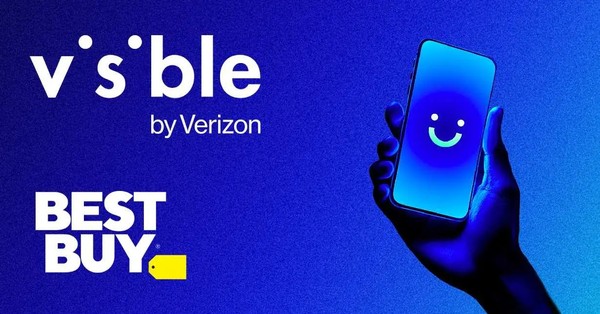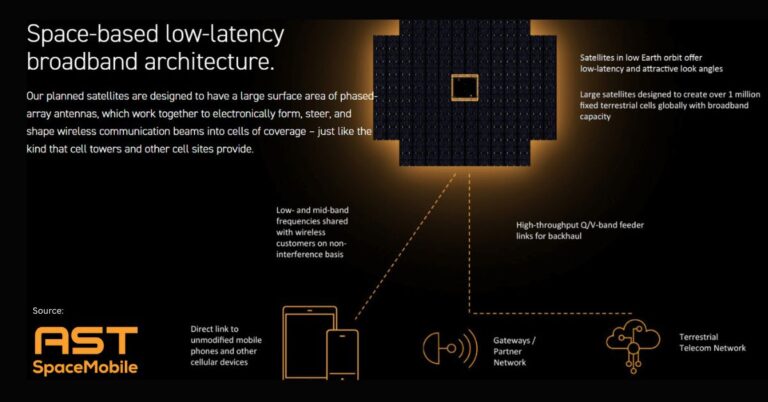Verizon’s Visible brings digital-first 5G plans to Best Buy retail
Verizon’s digital sub-brand Visible is extending from app-only to omnichannel, adding BestBuy.com today and a nationwide in-store rollout on September 28.
Launch details and availability
Visible’s plans are now sold on BestBuy.com, with physical availability at Best Buy stores across the U.S. beginning September 28. Customers keep the app-led experience—account setup, activation, billing, and support—while gaining retail conveniences like immediate SIM pickup, device compatibility checks, and help from trained associates.
Unlimited 5G plans, hotspot, and Inner Circle
Visible offers unlimited data, talk, and text on Verizon’s 5G-capable network, plus unlimited mobile hotspot and no annual contracts. The brand’s group option, Visible Inner Circle, provides additional monthly savings when friends or family join. Best Buy customers complete plan selection and activation through Visible’s digital flow, maintaining the brand’s streamlined model.
How Visible fits in Verizon’s value portfolio
As a Verizon division, Visible targets value-seeking, tech-savvy buyers without diluting the flagship postpaid brand. The move broadens Verizon’s reach in prepaid/value segments while preserving network quality and a lean cost structure.
Why omnichannel 5G matters now
The Best Buy partnership signals a broader shift toward hybrid digital-retail engagement in U.S. wireless.
Omnichannel activation for value buyers
Consumers want low-friction digital activation, but many still prefer in-person reassurance for SIM/eSIM onboarding, device checks, and number transfers. By pairing app-first flows with retail touchpoints, carriers reduce activation friction and returns while meeting buyers where they shop for unlocked phones and accessories.
Accelerating eSIM and BYOD at retail
Retail staff can guide eSIM setup and BYOD compatibility using GSMA eSIM standards and device tools, shortening time-to-service. This is a critical lever as more devices ship unlocked and consumers look to keep existing phones to control total cost of ownership.
Competitive landscape and big-box channels
Digital or value brands increasingly seek big-box reach. Metro by T-Mobile and Cricket Wireless rely on branded retail; Boost Mobile has expanded third-party channels; Google Fi Wireless and other MVNOs have used retailers for SIM distribution. Visible’s entrance at Best Buy adds a Verizon-backed, app-centric alternative on the same shelf, intensifying competition for price-sensitive buyers.
How the omnichannel model works
The play blends digital economics with retail assurance to lower customer acquisition cost without building new stores.
Digital-first flow with retail assist
Visible retains a self-service core—no paper contracts, app-based support, digital payments—while Best Buy provides immediate fulfillment and human guidance. This limits overhead versus owned retail and supports same-day activation for shoppers purchasing unlocked iOS and Android devices.
5G performance, prioritization, and expectations
Sub-brands often employ traffic management policies distinct from flagship postpaid plans. Buyers should expect solid everyday 5G performance on Verizon’s network with potential differences in prioritization during congestion. Clear positioning in-store helps set expectations and reduce churn driven by mismatched performance assumptions.
Care, number porting, and returns integration
Successful execution hinges on well-trained associates, streamlined QR/eSIM flows, and tight loopbacks between Best Buy POS systems and Visible’s digital activation. Smooth number porting, credit/debit acceptance, and simple return paths are critical to keep first-30-day churn in check.
What this means for carriers, retailers, and OEMs
This partnership reshapes channel dynamics across the prepaid/value space and the unlocked device market.
Impact on Verizon and Visible
Expect lower acquisition costs than owned retail, better attach to unlocked devices, and improved conversion for shoppers who need in-person validation. The move helps Verizon capture share from competitors’ value brands while insulating premium postpaid ARPU.
Impact on Best Buy
Visible adds a recognized 5G value option that complements unlocked phone sales and Geek Squad services. It can lift attachment rates for accessories, device protection, and trade-ins, while differentiating Best Buy as a go-to destination for BYOD activations.
Impact on competitors
Metro by T-Mobile, Cricket Wireless (AT&T), Boost Mobile (Dish), and Google Fi Wireless will feel pressure to refine their own omnichannel tactics. Expect sharper in-store eSIM support, more aggressive group and hotspot offers, and tighter bundles with home internet or media where available.
What to watch next in retail 5G
Early execution will determine whether this becomes a template for digital brands scaling in physical retail.
Key execution indicators
Track activation mix (eSIM vs. physical SIM), BYOD conversion, first-30-day churn, and NPS for retail-assisted activations. Watch for pricing tweaks, premium data allocations, and hotspot thresholds as rivals respond. Monitor training depth for store associates and the speed of number porting within the in-store flow.
Network and device trends to monitor
As 5G coverage and capacity improve, differences in prioritization tiers become more visible during peak times. Enterprises and heavy data users should validate performance under load on devices commonly used in the field, and confirm roaming, hotspot, and tethering policies before committing group lines to a value plan.
Actions for telecom leaders and buyers
Use this shift to reassess channel, pricing, and activation strategies in the value and BYOD segments.
Carriers and MVNOs: next steps
Invest in retail-assisted eSIM onboarding, transparent performance positioning, and simplified returns. Align incentives so retailers prioritize frictionless activation over short-term spiffs. Consider group-discount constructs similar to Visible Inner Circle to drive multi-line stickiness.
Retailers and OEMs: next steps
Bundle unlocked phones with instant eSIM activation, device protection, and trade-in credits. Train associates on compatibility tools and number porting. Use inventory and signage that clearly map devices to carrier options and plan tiers.
Enterprise and SMB buyers: evaluation tips
For corporate-liable or stipend programs, pilot a small cohort on Visible to test coverage, hotspot reliability, and app-based care. Validate device policies and MDM compatibility, and set guidance for employees on where value plans are appropriate versus when premium prioritization is required.
Bottom line: Visible’s Best Buy entry
Visible’s entry into Best Buy gives Verizon a sharper omnichannel spear in the value segment, marrying digital efficiency with retail assurance just as consumers lean into BYOD, eSIM, and unlocked devices.
Why this model is durable
If execution is tight, expect stronger conversions at the point of device purchase, lower acquisition costs than owned retail, and sustained pressure on rival value brands to up their omnichannel game. The model aligns with where wireless buying is heading—and it’s arriving on a very visible shelf.









































